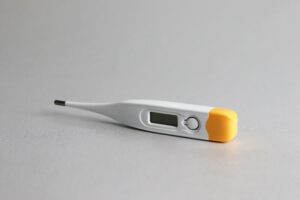Effective Anti-Ageing Approaches


Over time, the skin ages. This is an inevitable, natural process that affects us all. Obviously the rest of the body ages too, but changes to the skin are often the first visual sign of not only advancing age, but also various medical conditions. Click here for a comprehensive review of factors that can affect the skin and learn more on anti-ageing approaches.
Aging is a complex biological process, mediated by both endogenous and extrinsic factors. Endogenous factors include genetics, hormonal status and rate of cellular metabolism. Extrinsic factors include environmental pollution, ionizing radiation and chemical/toxin exposure. This explains why women who have undergone treatment for cancer are particularly prone to problematic skin and an exacerbation of the normal aging process.
The aim of a successful anti-aging therapy is to restore healthy, smooth, blemish-free, resilient skin. Some of the most frequently used approaches are:
– The application of topical agents and medications, usually rich in antioxidants.
– Invasive procedures such as chemical peels, laser therapy, skin injections and thread-based facelifts.
– Systemic agents such as HRT. Primarily used to combat other detrimental effects seen with increasing age, such as loss of bone density, but also have a positive effect on the skin.
– Avoiding harmful exogenous factors/making lifestyle adjustments. For example, stopping smoking.
The option used will depend on personal circumstances and preferences, as well as how severe the issue is deemed to be.
For many women applying a topical product to the surface of the skin is a good starting point. These products usually contain a range of ingredients, designed to improve the appearance and structure of the skin. Antioxidants such as vitamin C and E are regularly included, as are moisturizing humectants and emollients. Polypeptides are also widely used in anti-aging products. Peptides are small molecules that target and stimulate collagen synthesis, helping the skin to retain its elasticity and firmness. Collagen is present in the dermis, which is the middle layer of the skin; however, its levels decline with age. The peptides in skincare products work by promoting the production of new collagen, mimicking the body’s natural peptide signaling.
Sources:
- Ganceviciene, R, et al. “Skin Anti-Aging Strategies.” DermatoEndocrinology, vol. 4, no. 3, 1 July 2012, pp. 308–319., doi:10.4161/derm.22804.
- Hahn, H J, et al. “Instrumental Evaluation of Anti-Aging Effects of Cosmetic Formulations Containing Palmitoyl Peptides, Silybum Marianum Seed Oil, Vitamin E and Other Functional Ingredients on Aged Human Skin.” Experimental and Therapeutic Medicine, vol. 12, no. 2, Aug. 2016, pp. 1171–1176, doi:10.3892/etm.2016.3447.
- “Matrixyl.” The Derm Review, https://thedermreview.com/matrixyl/.













































